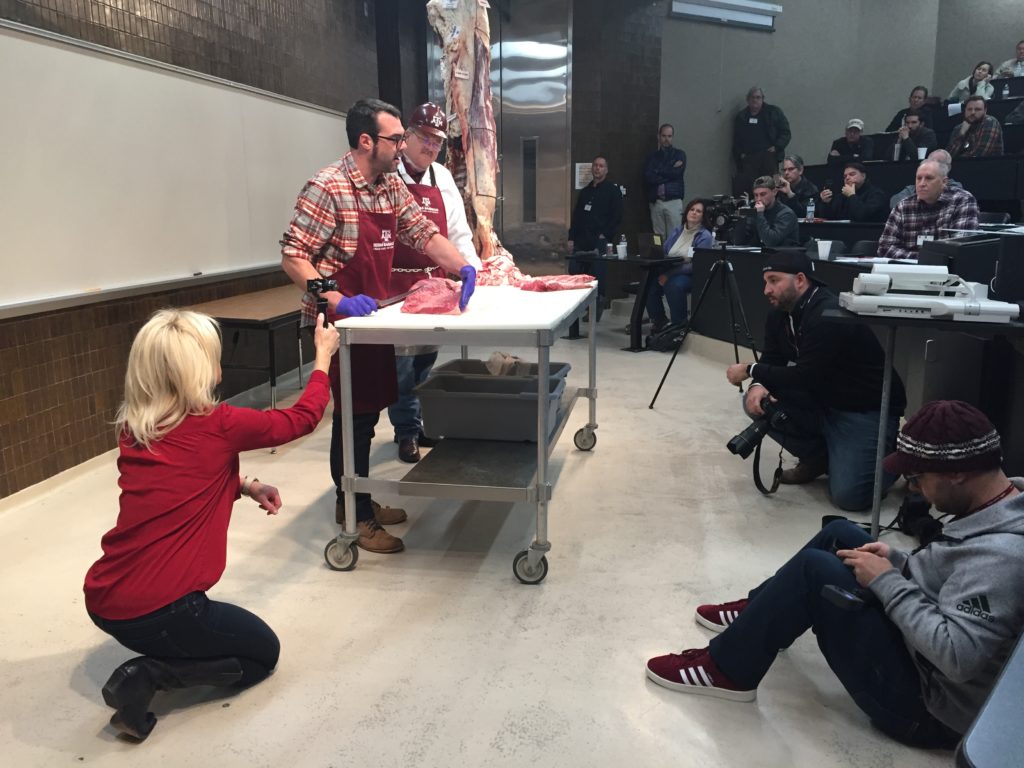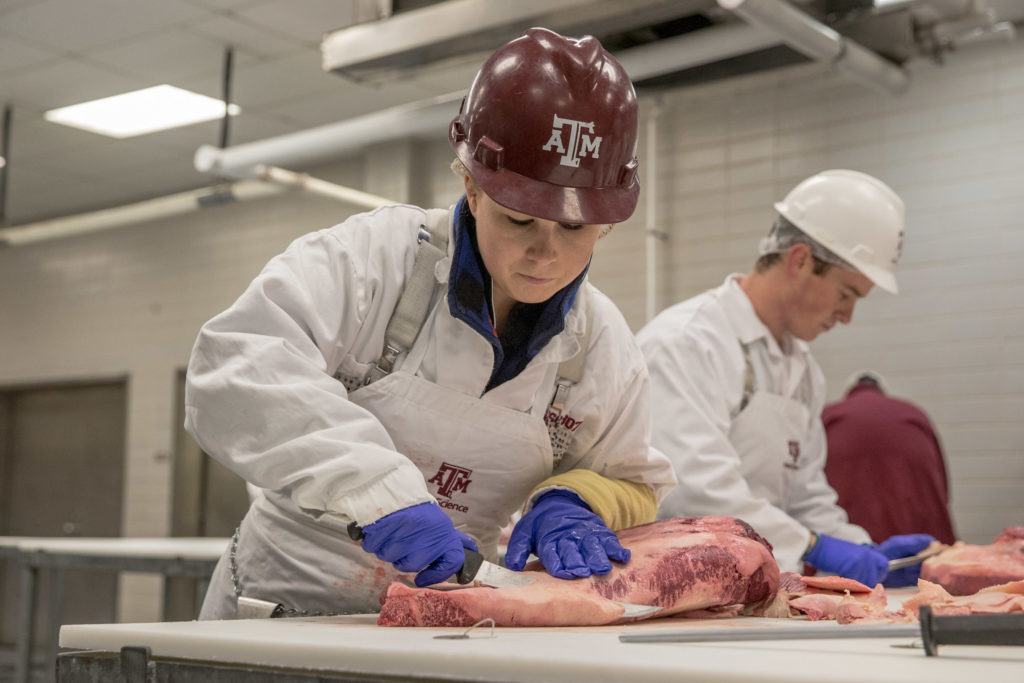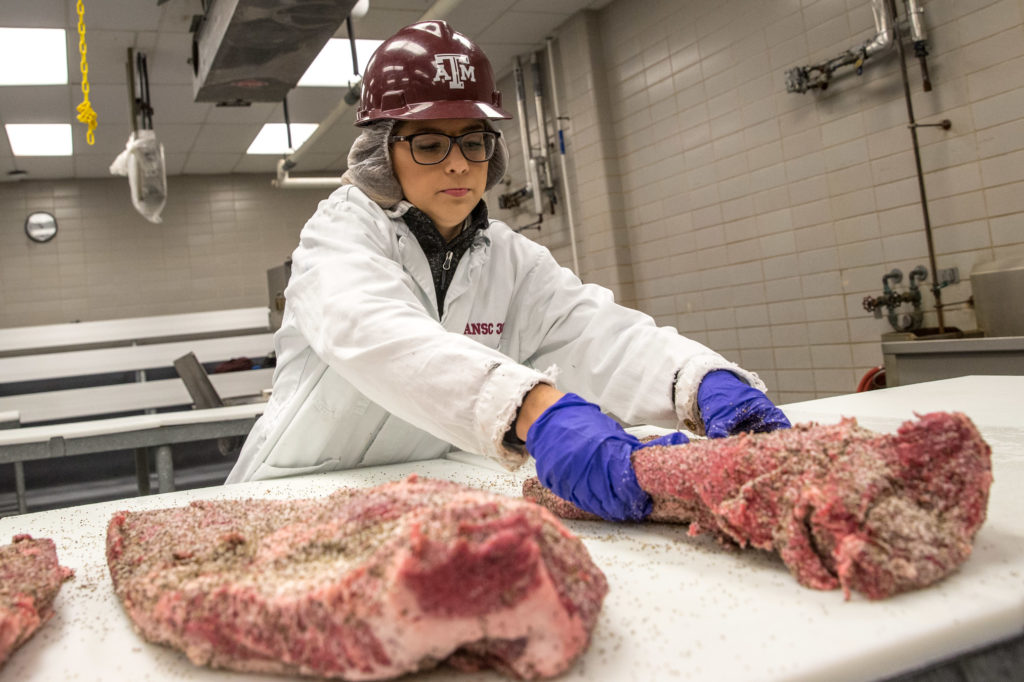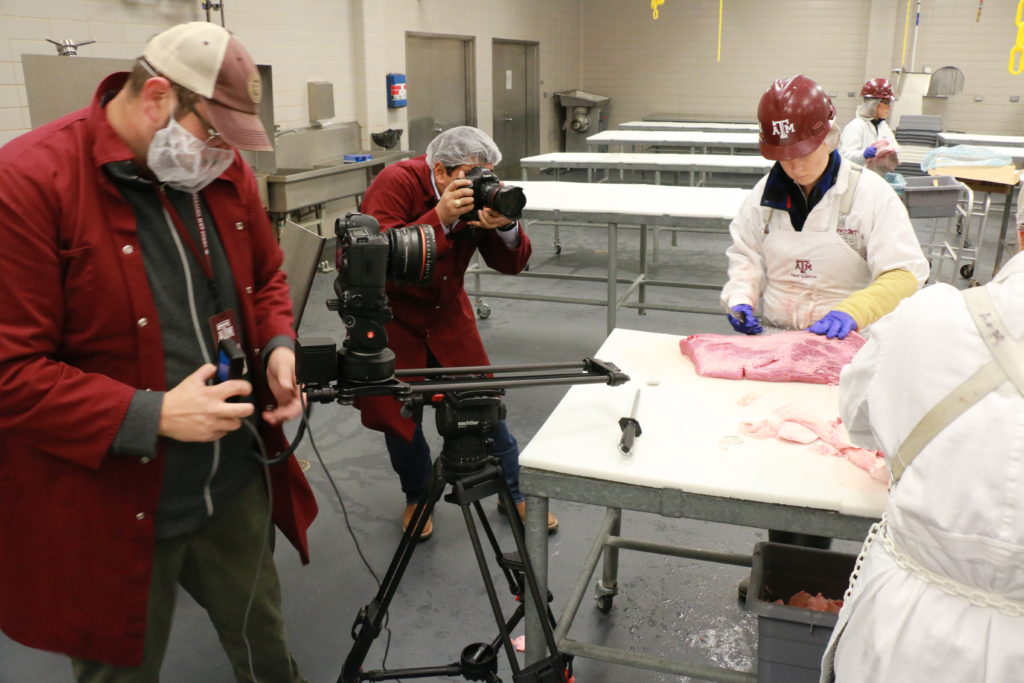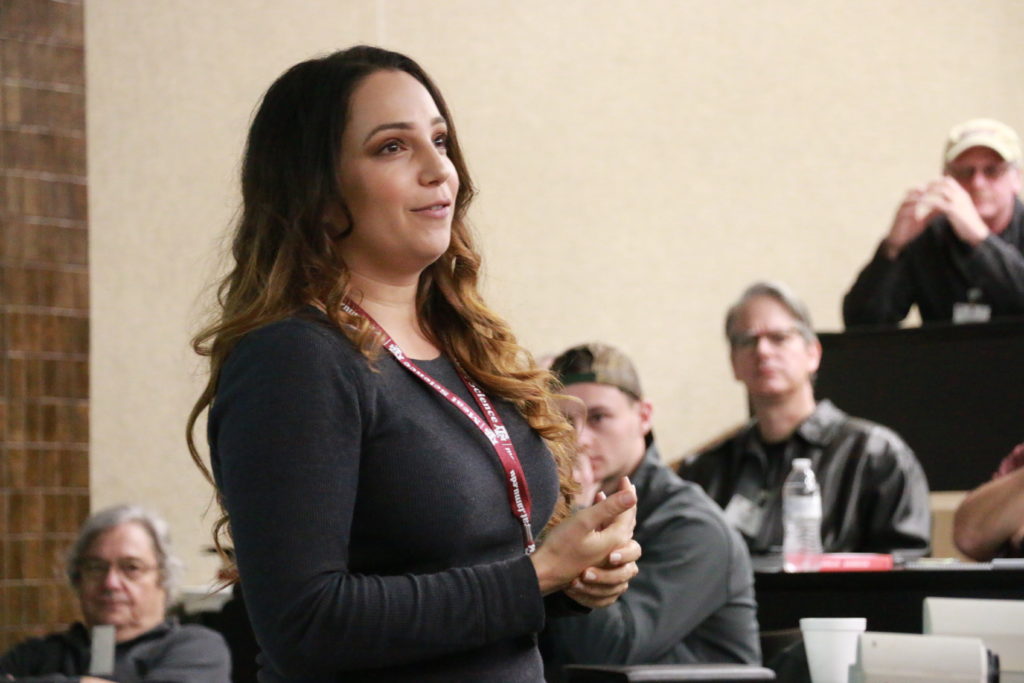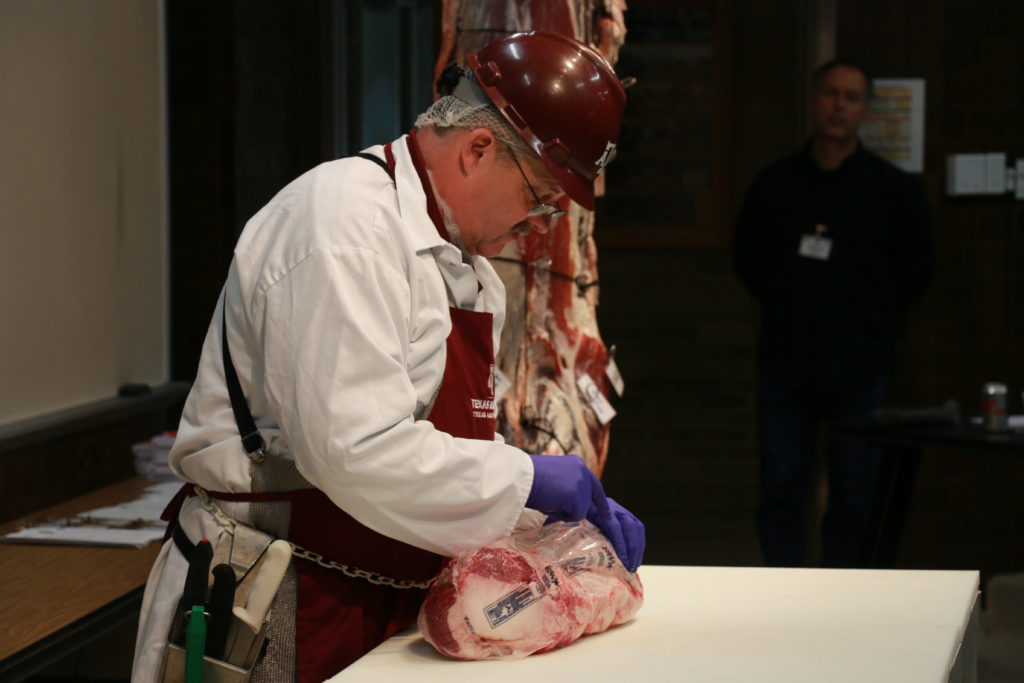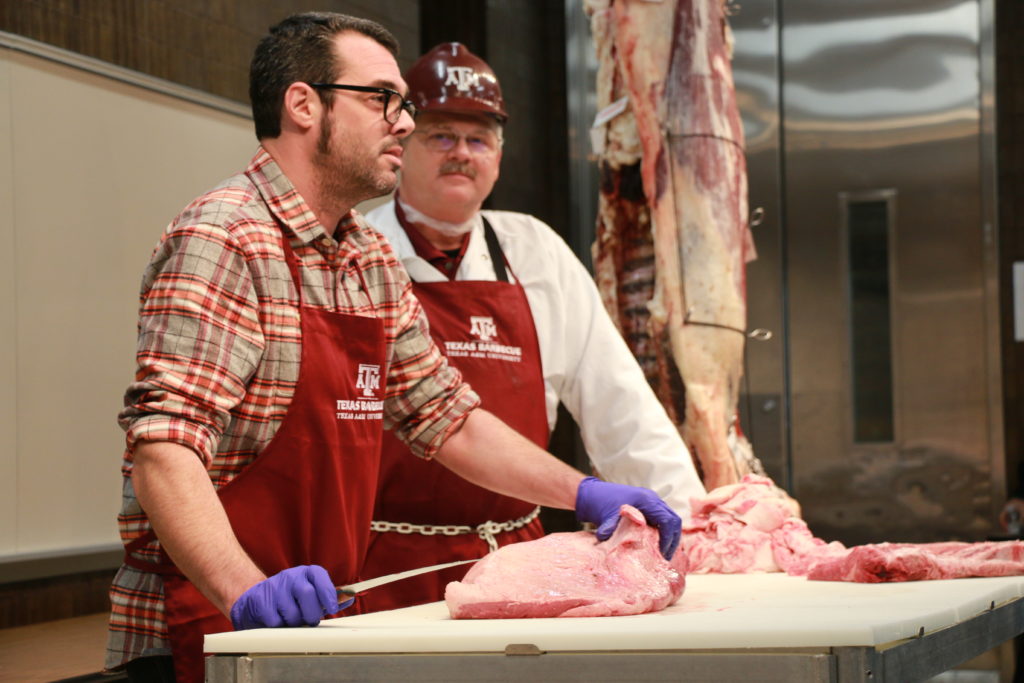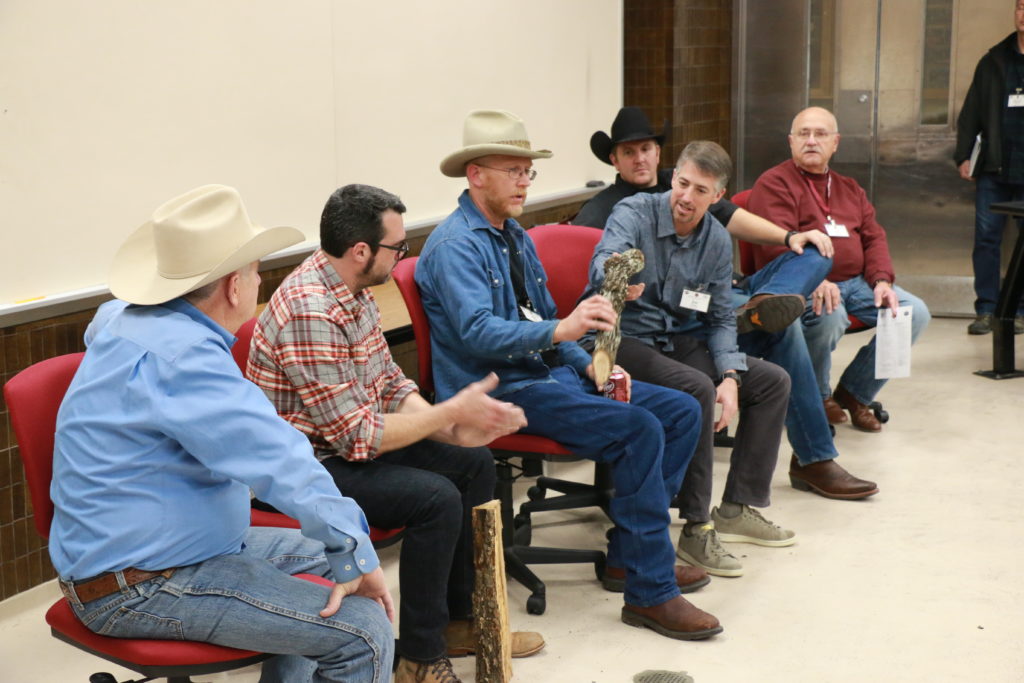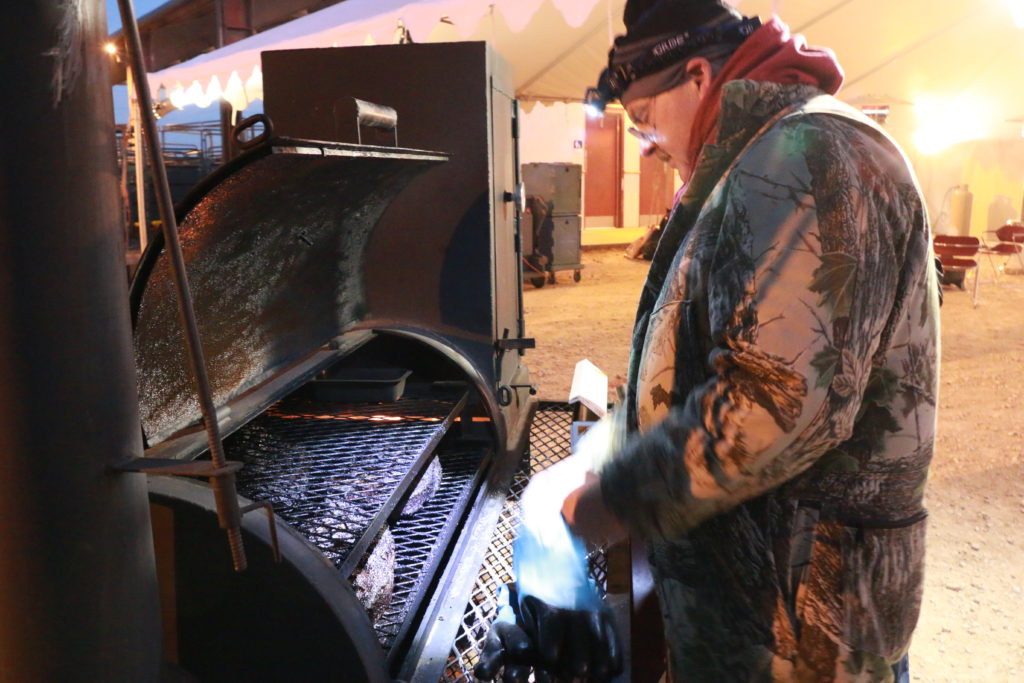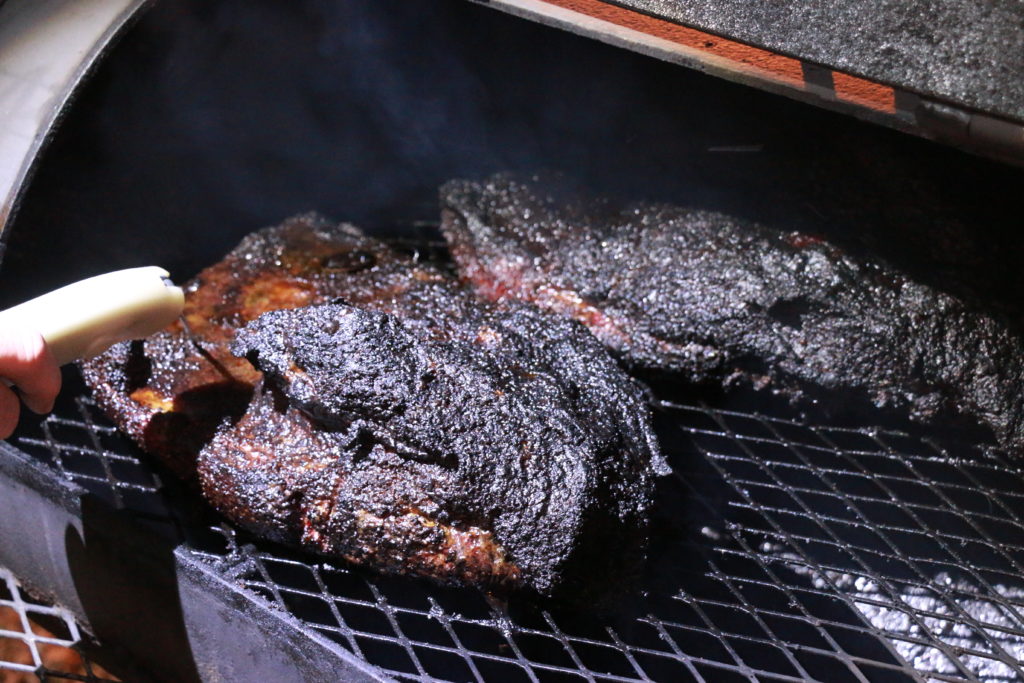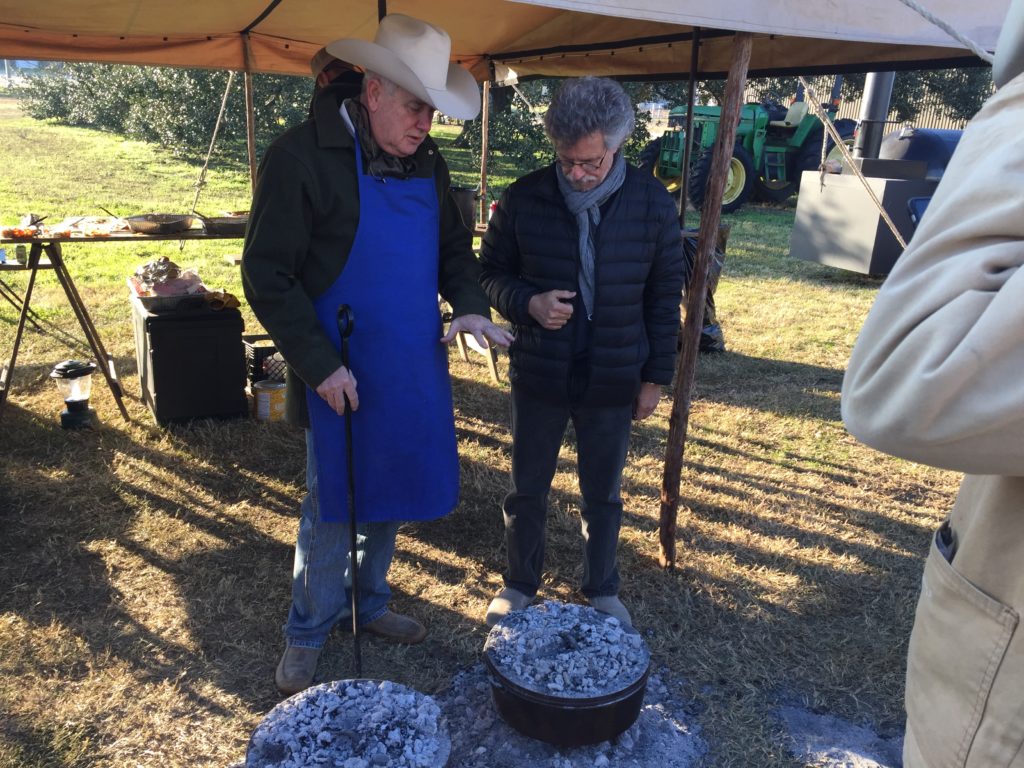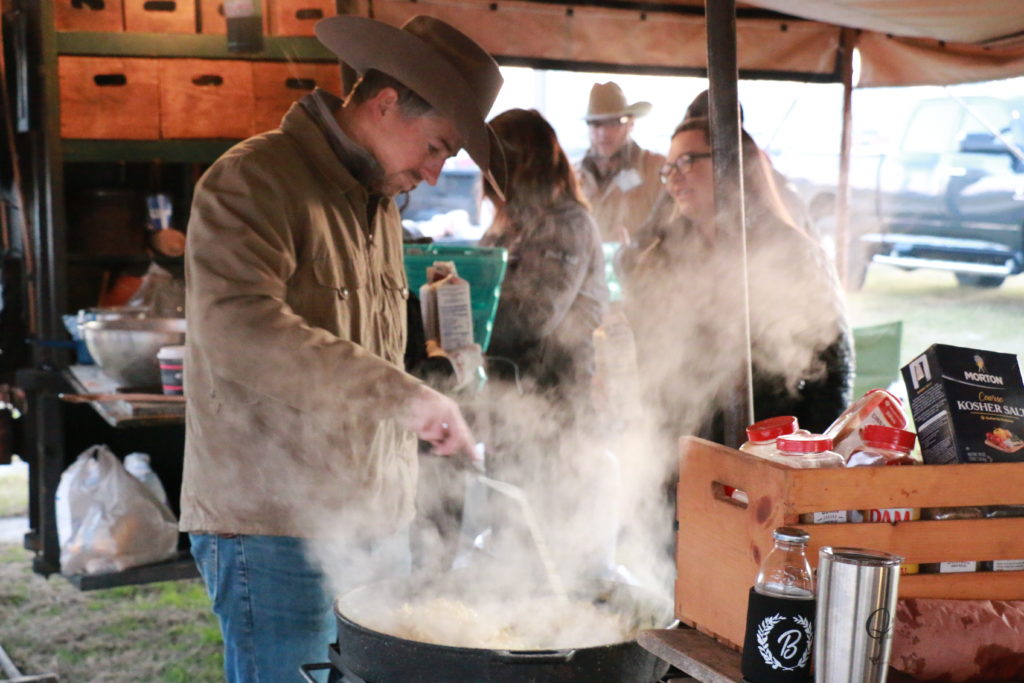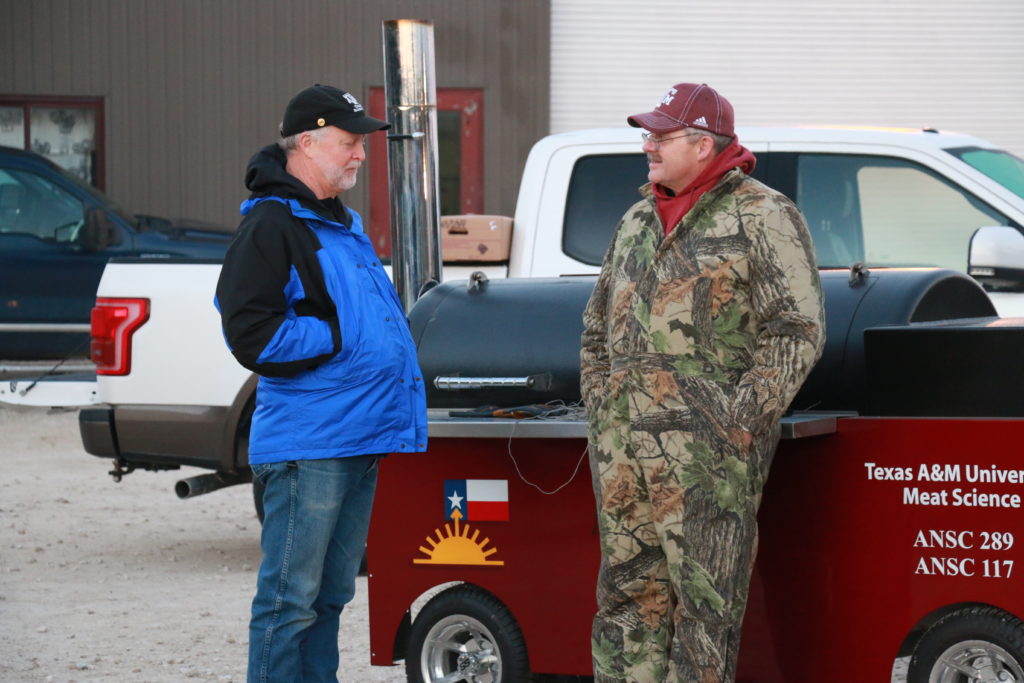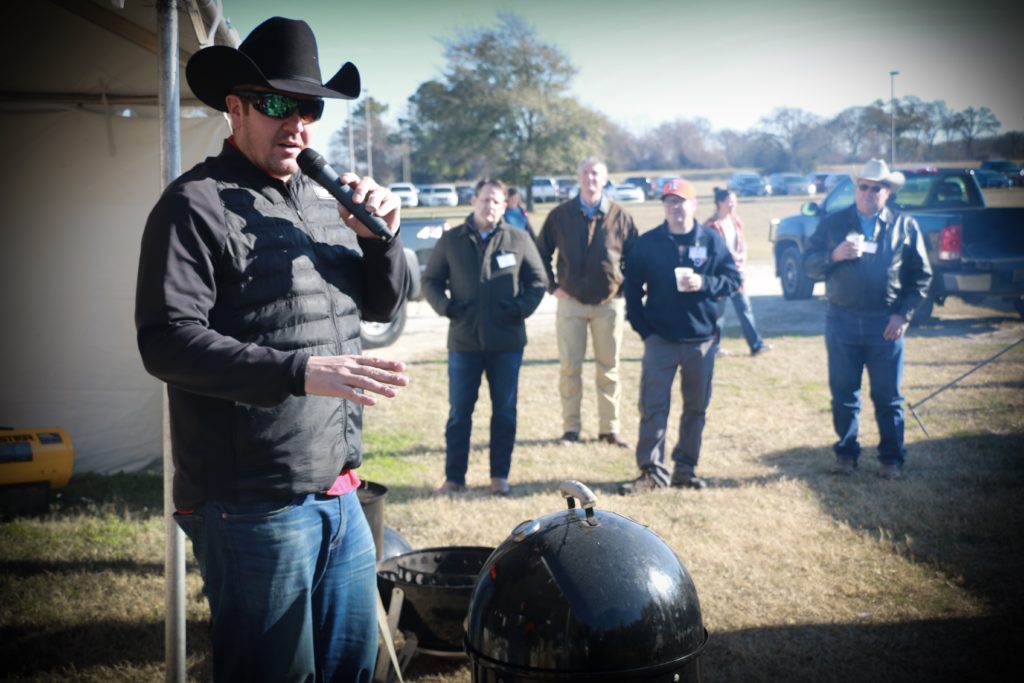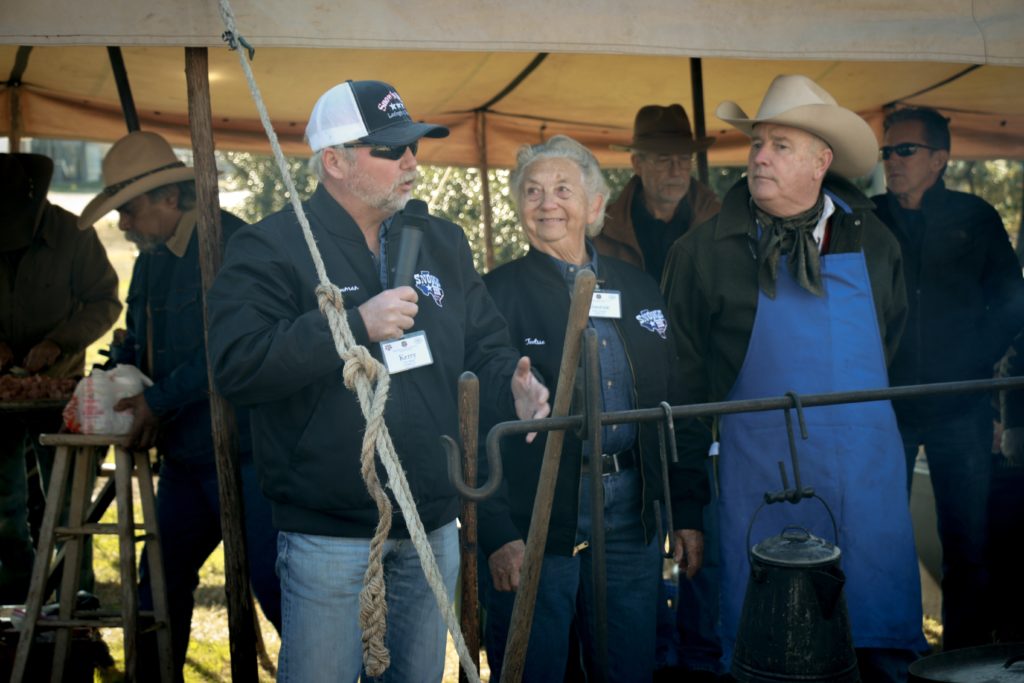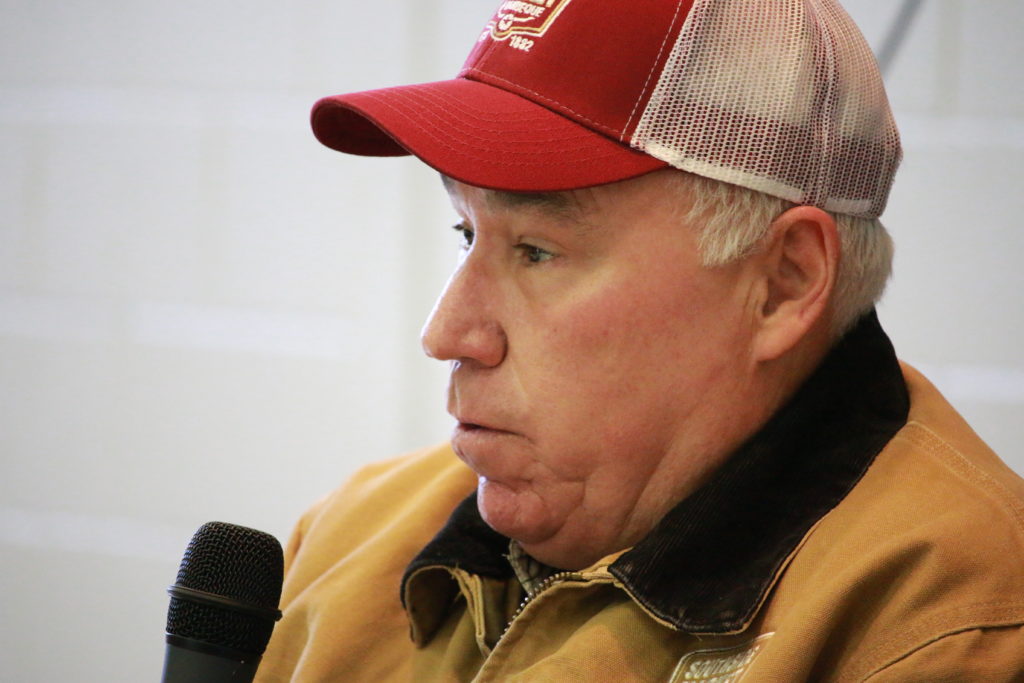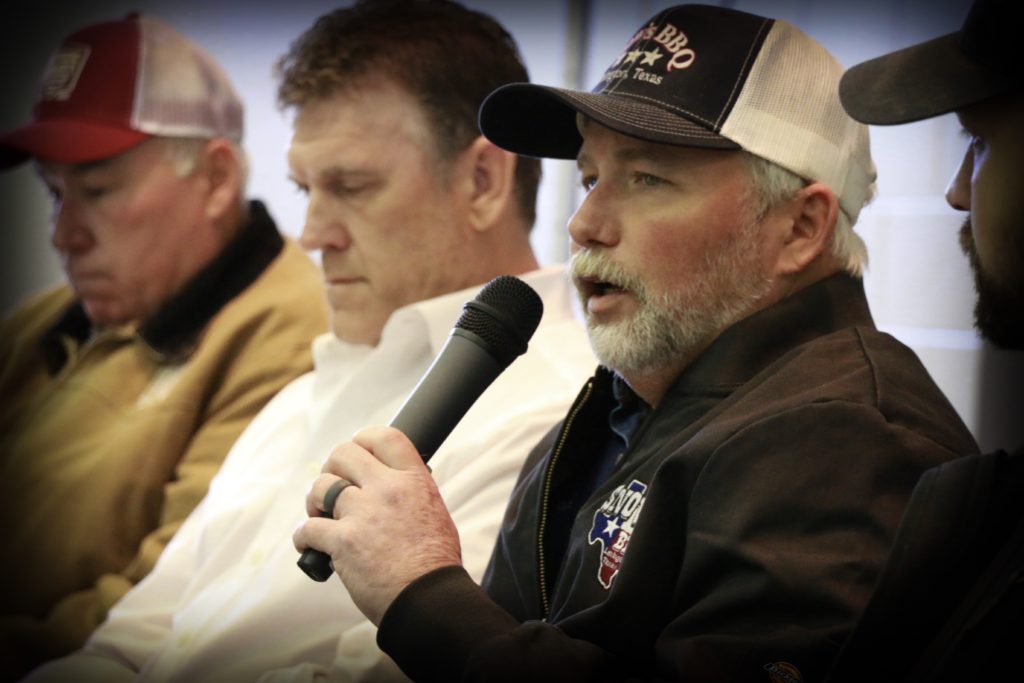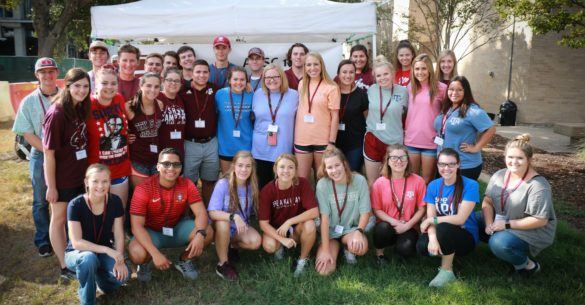The sixth Camp Brisket, a joint venture between Foodways Texas and the Meat Science Section of the Department of Animal Science at Texas A&M University, was held on January 5-6, 2018 at the Rosenthal Meat Center and the Beef Cattle Center at the O.D. Butler Animal Science Complex. About 60 participants from around the U.S. and Canada embarked on a journey to learn more about the ultimate challenge preparing that most difficult dish of Texas Barbecue cuisine, the brisket.
Camp Brisket was coordinated by Texas A&M University meat science educators, Davey Griffin, Ray Riley, and Jeff Savell, and who were assisted by graduate students, undergraduate students, staff, and friends and family including Clay Eastwood, Micki Gooch, Chandler Steele, Jill Jobe, Ciarra Gawlik, Jordan Hevner, Kenna Turner, Kirby Bohls, Eric Hamilton, Katy Jo Nickelson, Hayden Blumberg, Thomas Larriviere, and Jackson Larriviere. These great folks ensured that the needs of the briskets and guests were attended to through the camp.
Most used word at @foodwaysTX #campbrisket introductions has not been bbq, beef, or brisket, but community. #tamubbq pic.twitter.com/SI6E3oBf59
— Kelly Yandell (@KellyYandell) January 5, 2018
Greetings and introductions are part of the beginning of each Camp Brisket. Getting to know each other is one way to create community that is so important when we conduct these workshops.
Brisket trimming and seasoning
Before Camp Brisket starts, work begins on procuring the briskets representing different types and grades, trimming them, and applying the salt/pepper seasoning (we used a half and half mix by volume of Kosher salt and course ground pepper with 3/4 cup applied to each brisket). Davey Griffin worked with the grad students to get the briskets ready to go for the camp.
Texas A&M University Marketing & Communications (Marcomm) multimedia specialists, Donny Hall and Mark Guerrero, where present during the camp to document some of the activities that were going on. Thanks for the wonderful video and stills shot through the camp.
Brisket use and anatomy
The first talks were by Jess Pryles, cook, writer, and TV personality, on the difference between restaurant and competition brisket, and Davey Griffin, on the anatomy of a brisket.
A quick course on beef anatomy so we all understand exactly what the brisket is all about. #campbrisket #beefanatomy #tamubbq #brisket @tamudgriff @foodwaysTX pic.twitter.com/RIKKT1vc9u
— Kelly Yandell (@KellyYandell) January 5, 2018
Knife selection, brisket trimming, and cooked brisket slicing
Proper knife use and sharpening was covered by Jeff Savell before a demonstration on trimming raw briskets and slicing cooked briskets was led by Aaron Franklin of Franklin Barbecue in Austin, Texas.
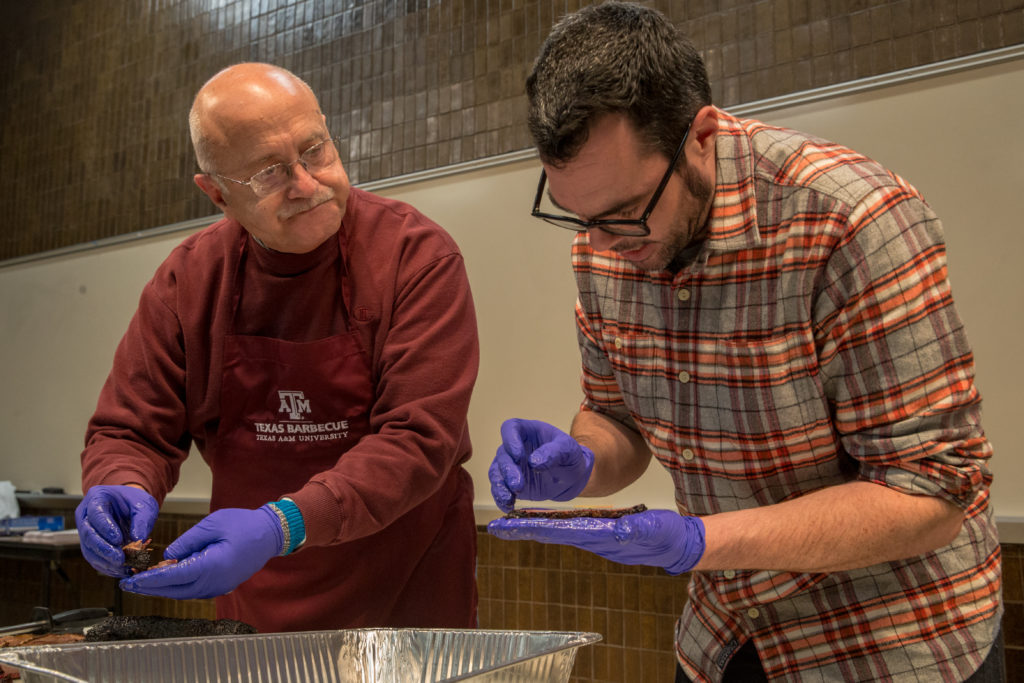
Jeff Savell and Aaron Franklin talking about proper slicing of briskets (Mark Guerrero/Texas A&M University)

Jeff Savell showing how to evaluate slice tenderness for cooked brisket (Mark Guerrero/Texas A&M University)
Tasting different grades of brisket
The first tasting test we did was for different grades of brisket. We obtained five different grades/types of briskets for use in this demonstration: Prime, Chairman’s Reserve, Wagyu, Choice, and Select. These briskets and the remaining ones used for the camp were trimmed to have no more than about 1/4 inch of fat remaining anywhere. Each brisket was seasoned with 3/4-cup of a half and half mixture (by volume) of Kosher salt and coarse-ground black pepper. The briskets for the grade/type demonstration were cooked on Russell Roegel’s of Roegels Barbecue pit with John Brotherton of Brotherton’s Black Iron Barbecue managing the cooking cycle. Oak logs were the source of heat and smoke.
Each grade/type of brisket was sliced so that each participant received a sample to rate on a ballot. When completed, the ballots were tabulated by the students to determine whether the participants could tell the difference in the grades or types of brisket. The winner? The result of the taste test was a tie! All grades had similar consumer overall like ratings. Each year, this taste comparison usually results in Prime and Wagyu near the top and Select being near the bottom in ratings. There are perceivable differences in eating quality among different grades and types of briskets, and those interested in producing the best cooked briskets possible need to be aware of this.
Wood and Smoke panel
There was a Wood and Smoke panel at the end of the afternoon featuring Jeff Savell as the moderator, Bill Dumas, Stiles Switch BBQ and Brew; Aaron Franklin; Kevin Kolman, Weber Grills; Joe Riscky, Joe Riscky’s Barbeque; and Homer Robertson, World Champion Chuck Wagon competitor and Fort Worth Fire Department leader. Post oak is the featured wood for Texas Barbecue based on its abundance and how the smoke complements beef. The panel discussed the topic of using properly seasoned wood to smoke with and how important it was to getting a clean fire that imparts the good aspects of the smoke onto the product. The positives and negatives of the other woods most commonly used in smoking — hickory, mesquite, and pecan — were discussed.
Friday night dinner
We moved to the Beef Center for the rest of the program. We were blessed to have two great people involved with dinner that night. Arnis Robbins from Evie Mae’s BBQ from Wolfforth, Texas provided the main meal with prime rib from 44 Farms. Homer Robertson, world champion chuck wagon competitor, provided bread pudding and apple crisp for the crowd. The food was enjoyed by all!
Overnight smoking at Camp Brisket
The next brisket comparison was to smoke briskets overnight using the four primary woods — oak, hickory, mesquite, and pecan. Multiple pits were used for the overnight cooking. We used Choice briskets, trimmed and seasoned as mentioned before, for the comparison, and briskets were put on the smokers around 8 pm on Friday evening so that they would be ready to serve around lunch time on Saturday. Kevin Kolman from Weber Grills started four Weber Smokey Mountain cookers with chunks from the four woods as part of the demonstration.
The staff, students, and family tended to the pits overnight. Temperatures were chilly overnight, which continues the trend where weather is a factor at Camp Brisket.
Chuck wagon breakfast, starting fires, and pit discussion
Saturday morning became a time for a great chuck wagon breakfast of biscuits and gravy and breakfast tacos from Homer Robertson, Ty Robertson, JArthur Garcia, and Joe Riscky, a primer on starting fires in off-set pits and Weber Smokey Mountain cookers, a review of the different types of pits we used to cook with, and a discussion by Homer Robertson, and Kerry Bexley and Tootsie Tomenetz, Snow’s BBQ about cooking over direct coals.
Pit design and maintenance panel
A pit design and maintenance panel was composed of Aaron Franklin; Russell Roegels, Roegels Barbecue; Kerry Bexley, Snow’s BBQ; Wayne Mueller, Louie Mueller Barbecue; Tom Abney, Southside Market and Barbeque; Ryan Zboril, Pitts and Spitts; Kevin Kolman, with Davey Griffin as the moderator. Each panelist added his own take on what types of pits/cookers they preferred and what they did to make sure they were used to their best ability.
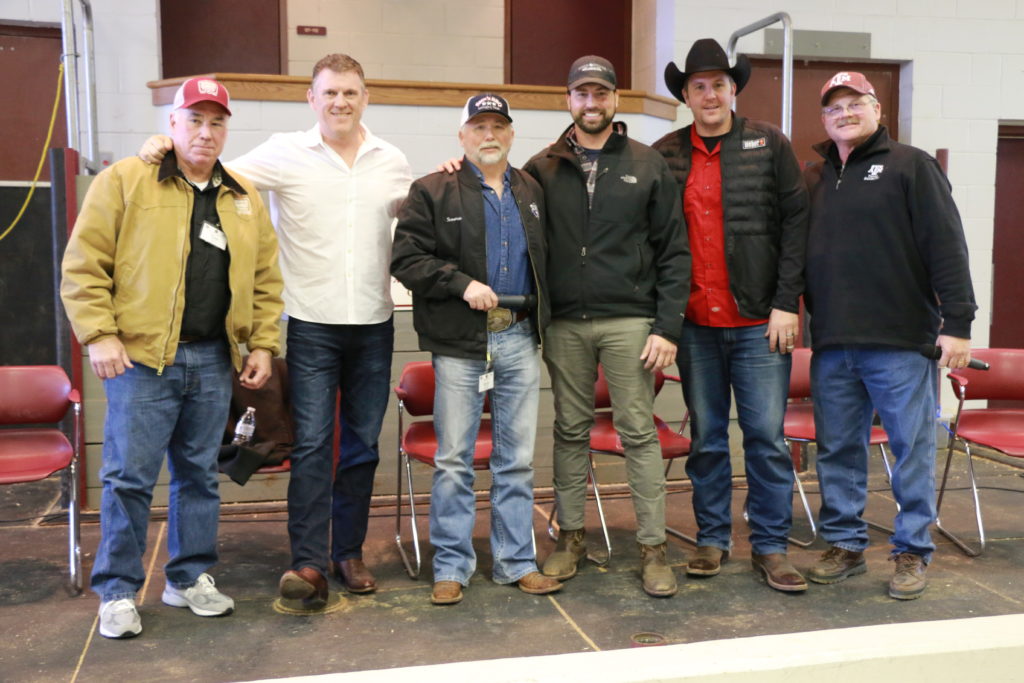
Pit design/maintenance panel: Tom Abney, Southside Market and Barbeque; Wayne Mueller, Louis Mueller Barbecue; Kerry Bexley, Snow’s BBQ; Ryan Zboril, Pitt’s and Spitt’s; Kevin Kolman, Weber-Stephens; and Davey Griffin, moderator
Seasonings and barbecue science
Brandon Burrows, Kerry Ingredients spent some time going over different seasonings outside of the normal use of salt and pepper. Jeff Savell discussed some of the science behind meat and barbecue and fielded questions from the crowd regarding a wide array of topics.
Instagram post by @louiemuellerbbq ��� Jan 6, 2018 at 9:36pm UTC https://t.co/ECZMPLBewC #campbrisket #louiemuellerbbq pic.twitter.com/gsEurMk4a9
— KCQueCrew (@kcquecrew) January 7, 2018
Smoke tasting panel
Lunch that day was the tasting of the briskets prepared using the four different smokes — oak, hickory, mesquite, and pecan. Each participant received a small slice of brisket from each smoke and were asked to rate it on 9-point scales. Students tabulated the results, and there was a three-way tie among oak, mesquite, and pecan, with oak being different from mesquite, but not from pecan or hickory. Most years, either oak or hickory wins this competition.
Life as a pitmaster panel
One of the most highly regarded parts of Camp Brisket is the final panel, moderated by Jeff Savell, which featured Russell Roegels, Wayne Mueller, John Brotherton, Tootsie Tomanetz, Kerry Bexley, and Joe Riscky. The title of the panel was “Life as a Pitmaster,” and it gave each person a time to reflect on their path to where they are now, the challenges and opportunities they each face, and why in this crazy world of barbecue, they love this business so much.
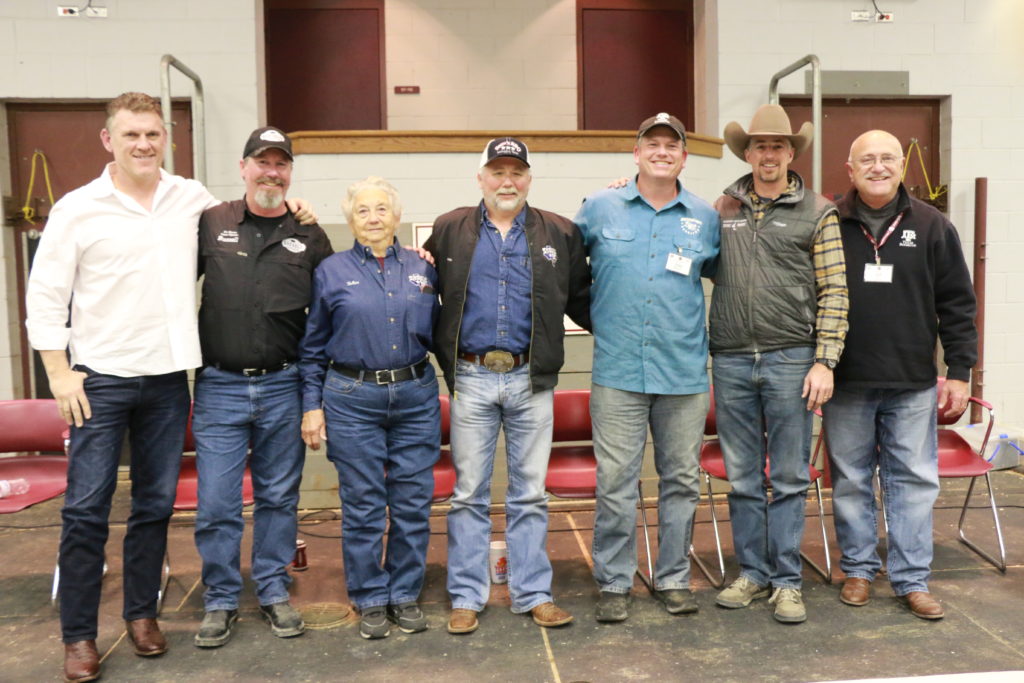
Wayne Mueller, Russell Roegels, Tootsie Tomanetz, Kerry Bexley, John Brotherton, Joe Riscky, and Jeff Savell
Send off meal
The final meal was a comparison of wrapped versus unwrapped briskets. There was no difference between wrapped and unwrapped briskets. Most participants are facing “brisket fatigue” at this point, and are ready for something fairly light as they depart.
We end Camp Brisket for this year and know that many people from all walks of life have come together to bond over barbecue in general, but with the common goal of how to tackle the challenge that is the brisket! Thanks to Kelly Yandell, Foodways Texas board member, for coming and taking such great photos and being at the camp to support everyone.

